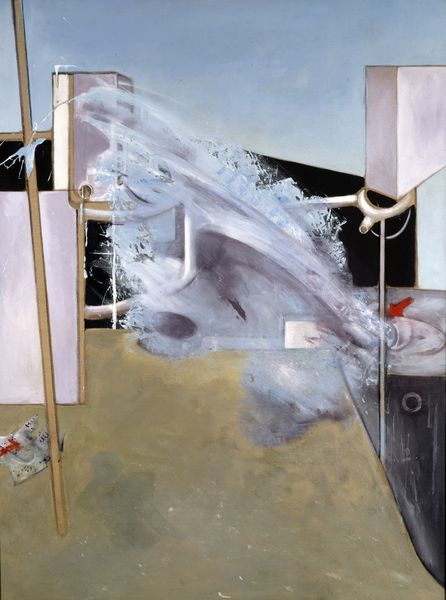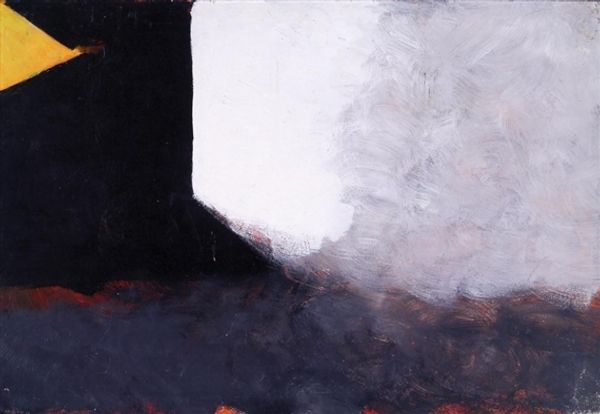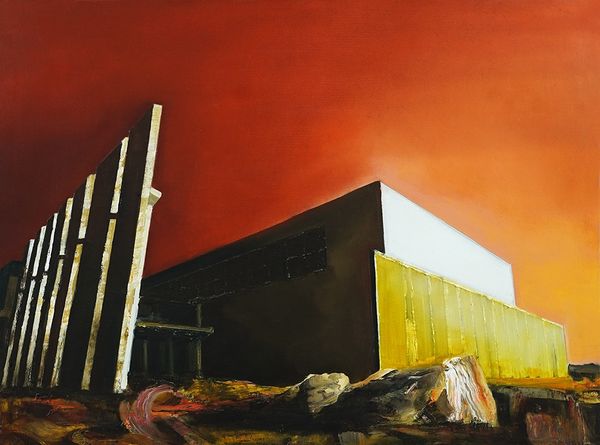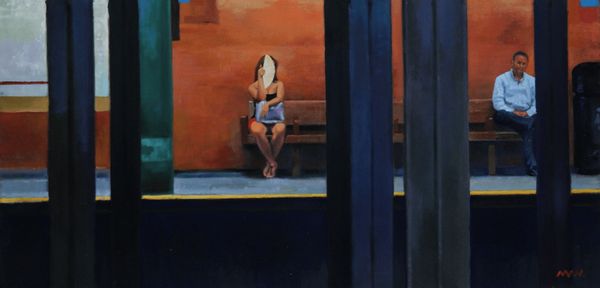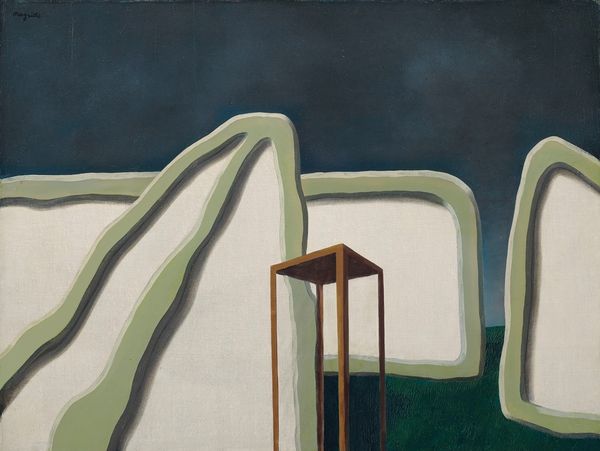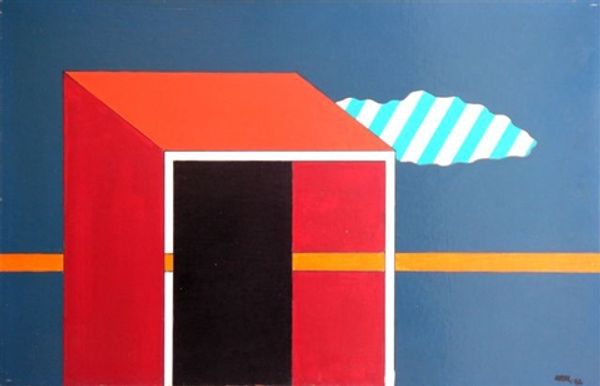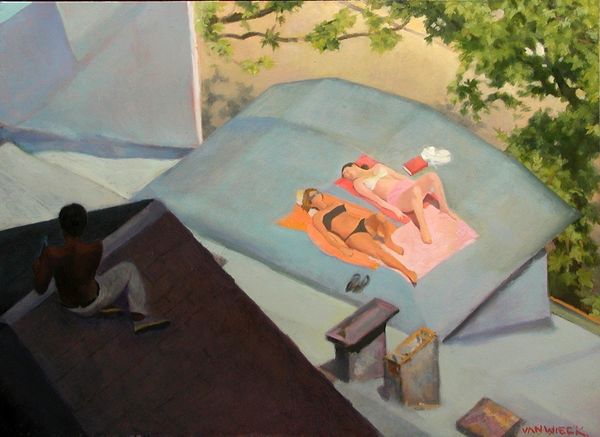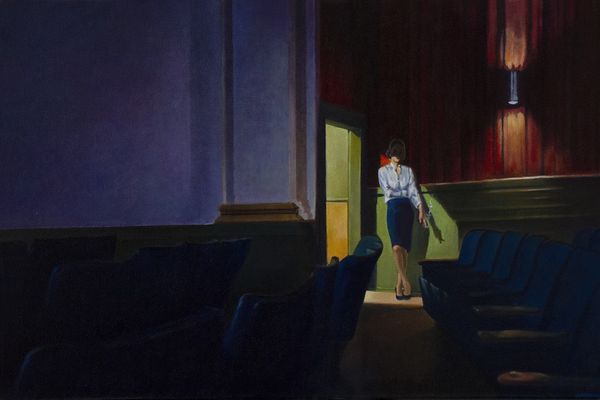
painting, oil-paint
portrait
painting
oil-paint
landscape
figuration
oil painting
neo expressionist
portrait art
modernism
Copyright: Charles Blackman,Fair Use
Curator: The first thing that strikes me is the feeling of loneliness. This child seems so isolated against the cold backdrop. Editor: Indeed. Let me introduce you to Charles Blackman's "The Dark Street," painted in 1954 using oil on canvas. Blackman was deeply invested in the social and emotional landscapes of postwar Australia. Curator: Postwar alienation rings true here. The stark architectural structure almost seems to imprison the child, wouldn't you agree? Editor: Absolutely. Architecturally, it’s reminiscent of institutional design. Blackman often explored themes of displacement and social anxiety in his work. This severe contrast creates a palpable sense of vulnerability. Looking at the little girl, leaning against the structure almost blending with it. There is no indication that there are any adults with her or others of similar age, for comfort. She has nowhere to fit, it appears. Curator: She's a striking figure in a despondent atmosphere. Her figure is rendered simply, almost doll-like, yet there's an unsettling quality to her gaze. Her limbs are strangely colored and too long compared to her torso, making the image appear almost frightening. Do you see any deeper meaning embedded in her form? Editor: Perhaps her unsettling nature signifies something lost, or innocence corrupted by an unwelcoming world. The monochromatic palette—almost entirely greys and blacks—contributes heavily to the sense of despair. The repetition of shapes—those stark, dark window recesses—seem almost like gaping maws, don’t they? Curator: They do indeed. And consider the title: "The Dark Street." Streets, in modern life, are spaces of civic exchange. By emphasizing its darkness, Blackman immediately sets a tone of foreboding and a complete absence of that civil exchange or connection. The color of her skin and her general paleness are almost death-like as well. Editor: It almost makes one feel afraid to walk down such a street! But beyond the gloom, I’m intrigued by how Blackman captures the lingering effects of a society rebuilding. Curator: Ultimately, Blackman pushes us to confront uncomfortable truths about our relationship with the constructed world, its inhabitants, and the structures that bind or isolate us. Editor: Yes, and consider the visual symbols embedded in the image itself and the cultural resonances they carry across time. I'm left pondering what "dark streets" exist within our own lives and what those places and circumstances mean today.
Comments
No comments
Be the first to comment and join the conversation on the ultimate creative platform.

